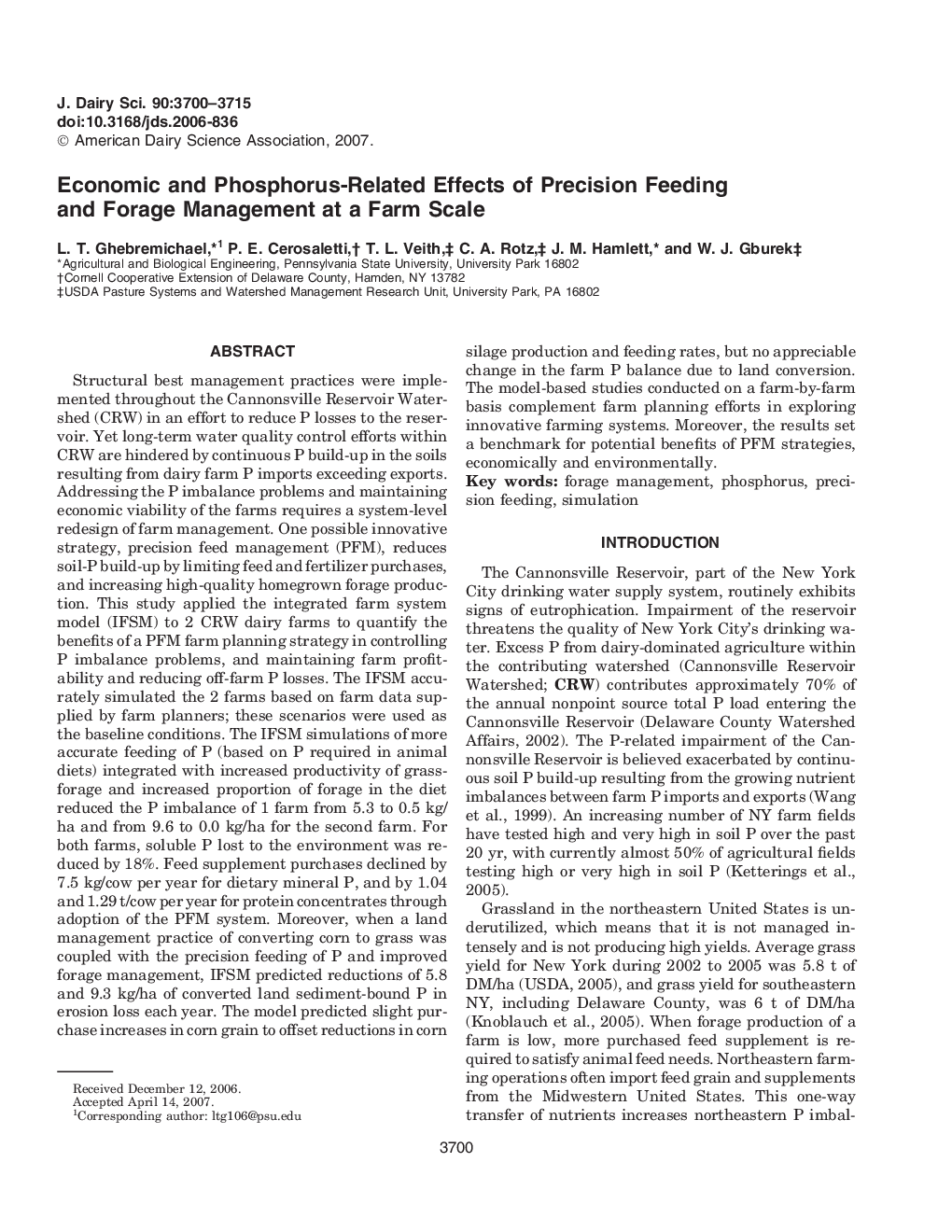| Article ID | Journal | Published Year | Pages | File Type |
|---|---|---|---|---|
| 2440450 | Journal of Dairy Science | 2007 | 16 Pages |
Structural best management practices were implemented throughout the Cannonsville Reservoir Watershed (CRW) in an effort to reduce P losses to the reservoir. Yet long-term water quality control efforts within CRW are hindered by continuous P build-up in the soils resulting from dairy farm P imports exceeding exports. Addressing the P imbalance problems and maintaining economic viability of the farms requires a system-level redesign of farm management. One possible innovative strategy, precision feed management (PFM), reduces soil-P build-up by limiting feed and fertilizer purchases, and increasing high-quality homegrown forage production. This study applied the integrated farm system model (IFSM) to 2 CRW dairy farms to quantify the benefits of a PFM farm planning strategy in controlling P imbalance problems, and maintaining farm profit-ability and reducing off-farm P losses. The IFSM accurately simulated the 2 farms based on farm data supplied by farm planners; these scenarios were used as the baseline conditions. The IFSM simulations of more accurate feeding of P (based on P required in animal diets) integrated with increased productivity of grass-forage and increased proportion of forage in the diet reduced the P imbalance of 1 farm from 5.3 to 0.5 kg/ha and from 9.6 to 0.0 kg/ha for the second farm. For both farms, soluble P lost to the environment was reduced by 18%. Feed supplement purchases declined by 7.5 kg/cow per year for dietary mineral P, and by 1.04 and 1.29 t/cow per year for protein concentrates through adoption of the PFM system. Moreover, when a land management practice of converting corn to grass was coupled with the precision feeding of P and improved forage management, IFSM predicted reductions of 5.8 and 9.3 kg/ha of converted land sediment-bound P in erosion loss each year. The model predicted slight purchase increases in corn grain to offset reductions in corn silage production and feeding rates, but no appreciable change in the farm P balance due to land conversion. The model-based studies conducted on a farm-by-farm basis complement farm planning efforts in exploring innovative farming systems. Moreover, the results set a benchmark for potential benefits of PFM strategies, economically and environmentally.
